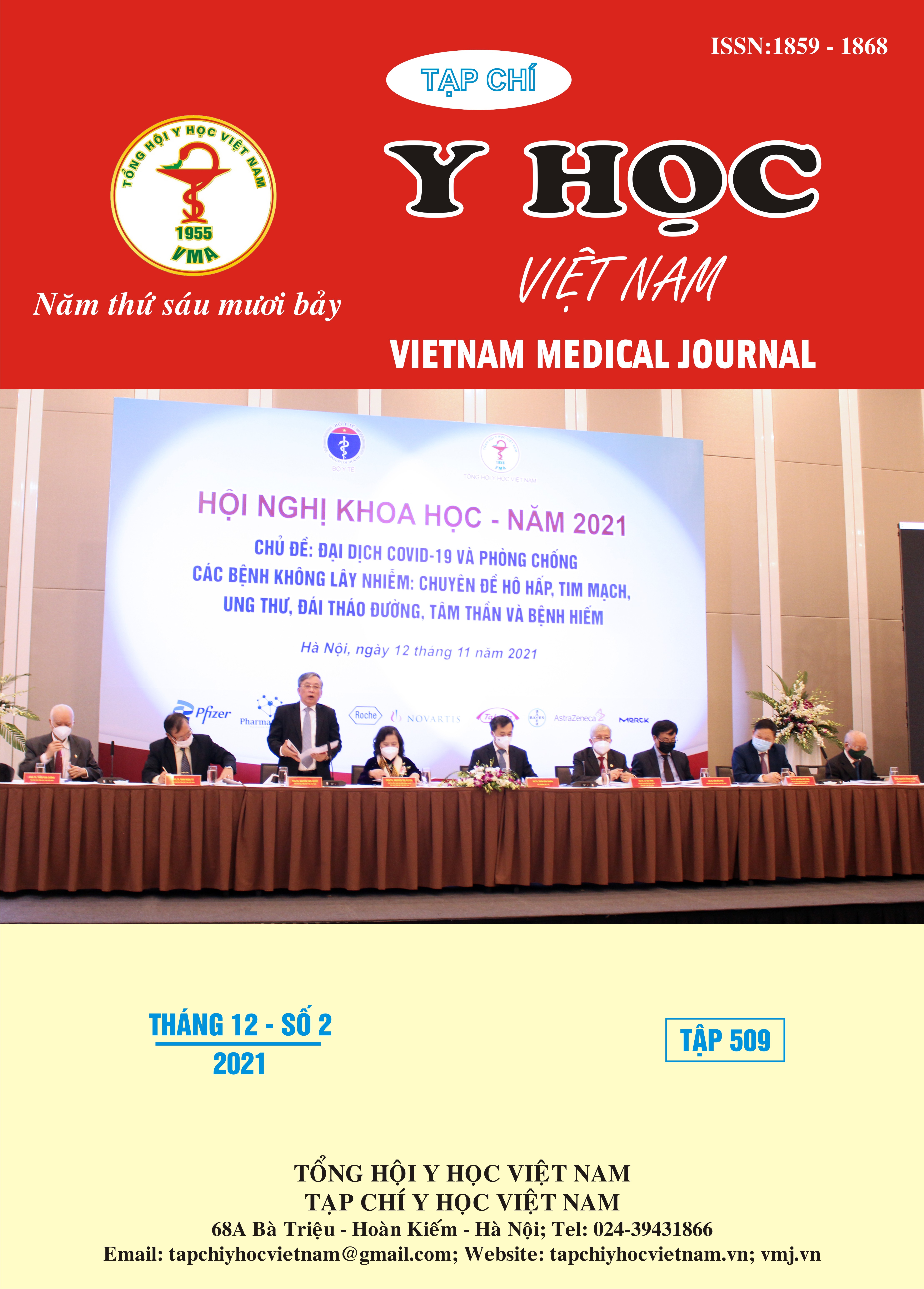COMMENTS AND ASSESSMENTS ON CLINICAL DIAGNOSIS, COLORECTAL ENDOSCOPY AND PATHOLOGY IN PATIENTS WITH COLORECTAL POLYPS
Main Article Content
Abstract
Objectives: Using endoscopy to screen, diagnose and treat colorectal polyps in order to contribute to reducing the incidence of colorectal cancer as well as treating patients with benign colon polyps. Subjects: Patients with symptoms of the lower gastrointestinal tract. Methods: A prospective, cross-sectional study at Nhat Tan hospital, An Giang province for 1 year (from October, 2020 to September, 2021). Results: 440 patients underwent endoscopy and found 113 patients with colorectal polyps (25,7%). Patients with lower gastrointestinal bleeding to colonoscopy accounted for 39,3% compared with no bleeding 16,4%, p < 0,05 with OR = 3,3 (CI 95%: 2,1- 5,1). The time of symptom appearance in people with polyps who came to colonoscopy early <6 months accounted for 67,6% compared with those without polyps 32,4%, p<0,05, with OR=0,13 (CI 95%, 0,06-0,30).The number of patients with only 1 polyp alone was 41 (36,3%), other patients had >2 polyps, on average 1 patient had 2 polyps. Location of polyps: 7 (6,2%) cases with many polyps scattered throughout the colon, 36 (31,9%) in the right colon and 70 (61,9%) in the left colon. The results of endoscopic polyp diagnosis showed that when compared with the "gold standard" method of pathologic examination, colonoscopy only achieved a very low sensitivity value (17,4%) and a negative predictive value calculated as 40%. Conclusion: Patients with polyps often come to endoscopy earlier with symptoms of gastrointestinal bleeding. Diagnosis by colonoscopy easily misses polyps with malignant potential and pathology is always the gold standard in the diagnosis of colorectal polyps.
Article Details
Keywords
colorectal endoscopy, polyps, adenoma
References
2. Ngoan Tran Le, Hang Viet Dao. Colorectal Cancer in Viet Nam. October 19th 2020. DOI: 10.5772/intechopen.93730.October 1
3. Wickramasinghe DP, Samaranayaka SF, Lakmal C, Mathotaarachchi S, et al. Types and Patterns of Colonic Polyps Encountered at a Tertiary Care Center in a Developing Country in South Asia. Hindawi Publishing Corporation Analytical Cellular Pathology.Volume 2014, Article ID 248142,4 pages
4. Jayadevan R, Anithadevi T S. Prevalence of colorectal polyps: a retrospective study to determine of the Cut-Off Age for Screening. Journal of Gastroenterology, Pancreatology & Liver Disorders.2016.DO - 10.15226/2374-815X/3/2/00156.
5. Thái Thị Hồng Nhung, Trịnh Đăng Khoa. Nghiên cứu đặc điểm lâm sàng, hình ảnh nội soi, mô bệnh học và đánh giá kết quả cắt đốt polyp ĐTT qua nội soi tại Bệnh viện Trường Đại học Y Dược Cần Thơ. TC Y Dược học Cần Thơ. Số 22-23-24-25/2019.
6. Piérola LBF, Fernández JC, Aguinaga FM, Muruamendiaraz LH, Malaver CJC (2013). "Malignant Colorectal Polyps: Diagnosis, Treatment and Prognosis". Colonoscopy and Colorectal Cancer Screening: Future Directions. doi:10.5772/52697
7. Lee YM, Huh KC. Clinical and Biological Features of Interval Colorectal Cancer. Clin Endosc 2017;50:254-260.
8. Baran B, Ozupek NM, Tetik NY, Acar E, et al. Difference Between Left-Sided and Right-Sided Colorectal Cancer: A Focused Review of Literature, Gastroenterol Res. 2018;11(4):264-273.


